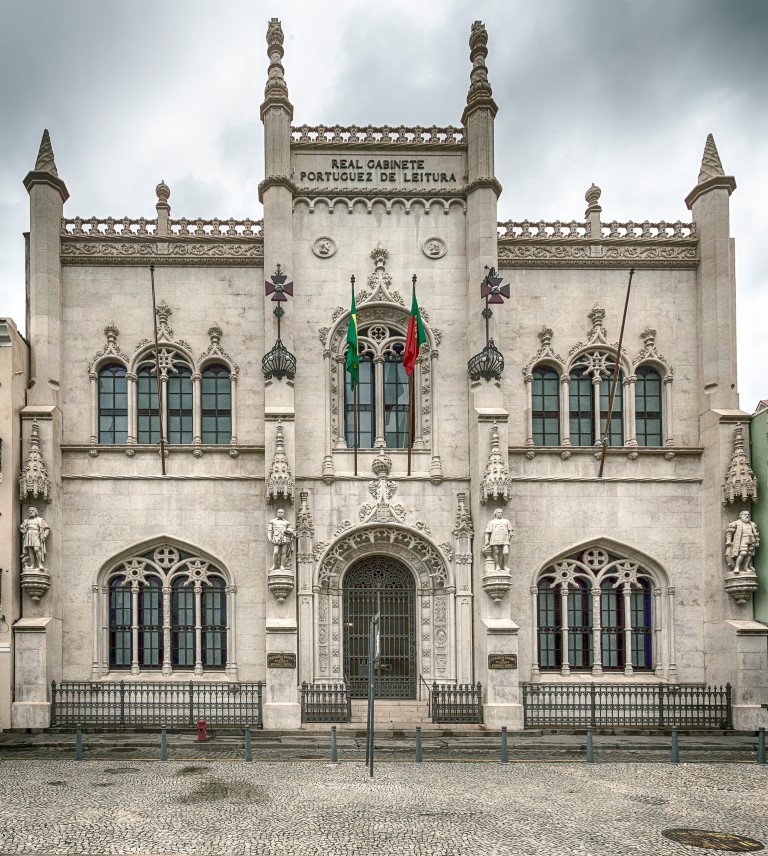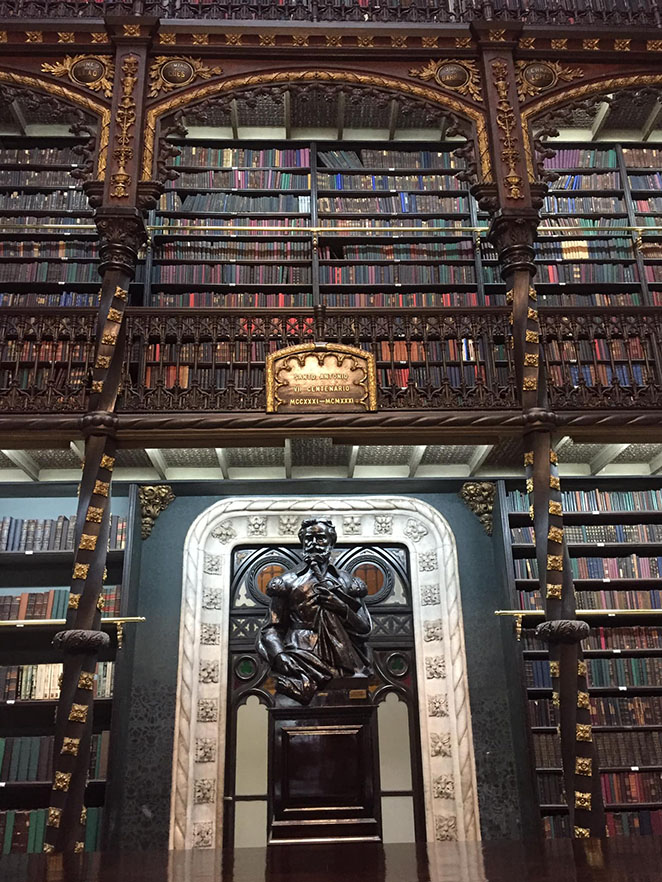Libraries, admirable places where I enjoy and learn, are great. The content always catches my attention as a book lover and bibliophile. The spaces that those books keep often surprise me. I visit them every chance I can (confidence: I prefer to go alone, so that no one disturbs “our” contact). Since they fascinate me, I also read about them as much as I can.
Thus, I have discovered that on the path that leads to them I am accompanied, well accompanied by distinguished characters. Mariano Moreno (9/13/1810, “The foundation of the public library” in La Gaceta de Buenos Aires), Arturo Pérez-Reverte (1993, “The Dumas club”), Jorge Luis Borges (1941, “The library of Babel” and 1959, “The poem of the gifts”), Irene Vallejo (2020, “The infinite in a reed”), Guillermo Furlong (1944, “Argentine Libraries during Hispanic domination”) and Julián Cáceres Freyre (1993, “Libraries that I have known as student and researcher") are there, to name only a few authors of the Spanish language who expressed themselves about them. Aldous Huxley also accompanies us on that imaginary walk, because he said, in 1947, that in difficult times what nourished his mind and sustained him was “a collection of good books” [1].
A few days ago I was in Rio de Janeiro, at the regional meeting convened by UNESCO on illicit trafficking of cultural property and security in museums. I had not previously visited the historic city; so I found out what I could know. I knew, however, that due to the activities I would have little time to be a walker, the best way to get to know a city.
So I chose. I made a list - arbitrary as usually happens in these cases - with six specific places. It was reduced to five since we would meet at the Imperial Palace for the sessions. It is a beautiful 18th century building that served as home to the governors of Brazil and subsequently to the royal and imperial family, today a very active cultural center with, in addition, a library of nearly 9,000 volumes.
Thus, there remained five places to visit: the imperial Cathedral - church of Nossa Senhora do Carmo da Antiga Sé, from 1761 -, the contemporary Cathedral - of Saint Stephen, a building of brutalist architecture built between 1965 and 1976 -, the Colombo confectionery - since 1894 in the same place -, the Royal Portuguese Reading Cabinet, in the historic center of the city, and the Niteroi Museum of Contemporary Art. The latter was left pending, due to lack of time.
The spaces visited, truly admirable, impressed me. They are works, each in its own style, that deserve the time and attention given to them. The plan of the temple and the baroque gilding of the walls, the organ and the ceiling of the church of Our Lady of Mount Carmel, the conical shape and the long four-color stained glass windows of the contemporary Cathedral, the tables, the mirrors, the sweets and the atmosphere of Colombo will all remain fixed in my memory.
But the “Cabinet” thing… the “Cabinet” thing deserves a separate paragraph. It was, without a doubt, “the discovery” and “the visit” of this trip.
Located in the historic center of Rio, the arrival is through a narrow cobblestone street, Luís de Camões, a Portuguese writer considered the greatest poet of the Portuguese language. There, the historic buildings on both sides are somewhat demolished, their walls covered in graffiti, with their ground floor stores arranged like shops selling all kinds of merchandise. Moving along it, on the left, you reach a small dry square and, very pleasant surprise!, on the right you can see the façade of “the Cabinet”.
From the square you can see the face of the building: white, made of worked marbles; In the lower part, a central gate with bars guarded by four statues and two windows, also barred. At the top three large windows, all ogival in shape. A tower stands out above the center. The complex is reminiscent of the Baroque, although I was told that it is a copy of the Jerónimos Monastery in Belém, in Portugal, and that its style is called Neo-Manueline. Whatever the case, it is a first impression that kindly invites you to enter.
There I went; I crossed the street, stopped to observe the work of the bronze plaque that announces where I was entering and the work of the window bars. I went through some steps and the entrance to the building is through a small hall with doors on all four sides. Behind me was the entrance door, in front of me, another door that, open, leads to a small and artistic hall. Both have beautiful floors of combined limestone mosaics, with the drawing of the Cabinet emblem, and dark woods that enhance the place.
From the second space, in front there is a door that promises a lot to whoever passes through it. Something is sensed from the shelves, from their multicolored content... And in front of the entrance curiosity increases. The excitement grows.
Upon entering that Reading Room, the eyes cannot capture at once everything that is presented to observation. In the midst of admiration and joy at being there, looking down, a floor of combined marbles; Climbing it up, the skylight, immense and through which a powerful light enters that floods the entire place, and from which hangs a bronze candelabra with four rows of lights. At the same level and turning your head, you can see, on one side, the metal and wooden stairs that lead to the upper floors of the shelves, the display case that displays ancient books of great value for Portuguese culture. I was lucky enough to have an exhibition of several copies of “Los lusiadas”, Camões's signature work, in various sizes and from different periods - from 1572, the first, to the tribute edition for the 400 years of the publication.
Finally, standing in the middle of the imposing square room and under the large light, I turned on my heels a full 360 degrees, focused and amazed. Without losing my balance and without thinking about anything other than the extraordinary nature of the place, I was able to contemplate the reason for such an elegant building, the almost 350,000 volumes that make up that library, which are displayed on neat, linear shelves, complete without being overcrowded.
The four walls of the enclosure are high, ending in an ogival shape and are up there painted in a deep blue-green that contrasts with the infinite colors of the books, their shelves and the glare that descends through the glass ceiling. There are three floors of ten or eleven shelves each; The two upper ones are surrounded by worked metal hallways supported, from the main floor, by wooden columns covered with artistic bronze garlands, which provides more color, more reflections and contrast to the space.
At the back of the square, facing the entrance door, there is a large dark wood desk, carved with reading images, and behind it, on the final wall, a large file that, half open, reveals one of its drawers the neat lines of bibliographic cards, which I suppose were consulted so many times before the virtual inventories arrived - the one I saw managed by an employee sitting at a modern desk in one of the corners, under the railing of the right wall of the room - . Next to this ticket office, a bronze bust of Pedro Álvares Cabral, considered the first European to set foot on Brazilian territory.
The view is captivating. Photography: https://www.realgabinete.com.br
I no longer remember how many minutes the visit was. Yes, entering that peculiar world - the entire building, the reading space, the enormous quantity and quality of the volumes - moved me, it produced a great emotion in me. The feeling of being under the aura of that immensity of books was unique. At that moment I did not lose my sanity or my wealth through books as happened to Don Quixote, but like him I imagined in those volumes how many stories I could contemplate and enjoy "both enchantments and quarrels, battles, challenges, wounds, heartbreaks, loves, storms and nonsense” (Part I, ch. 1) just by having time to stay there. But time was short.
The Royal Portuguese Reading Cabinet was founded in 1837 by 43 immigrants who decided to form a library to expand their knowledge; the current building dates from the 1880s; Since 1900 it has been a public library. Today it houses the historic library, the updated library, a study center and exhibition halls of its cultural heritage.
If libraries are “the arsenal ready to dynamit authoritarianism and stupidity,” as Reynaldo Sietecase says [2], there is no doubt about how necessary it is, in these turbulent times, to visit them and use those artifacts that complete them, our dear ones. books, to learn from what they tell, to enjoy their content, to fly for a while with the imagination to a less tremendous place. If, in addition to good content, there is an attractive building-container, that visit is essential.
So, those who have a special relationship with books, if they are in Rio de Janeiro, should approach the Royal Portuguese Reading Cabinet and wander around its area. I assure you, you will have a pleasant time, different from what you are used to in that city, as happened to me a few days ago.
Notes:
1. Aldous Huxley, Si mi biblioteca ardiera esta noche, Edhasa, 2009, pp. 195-201.
2. Reynaldo Sietecase, ¿Cuántos libros me quedan por leer? En BIBLIOTECAS, Ediciones Godot, 2023, pp. 127-136.
* October 2023. Special for Hilario. Arts Letters Trades


